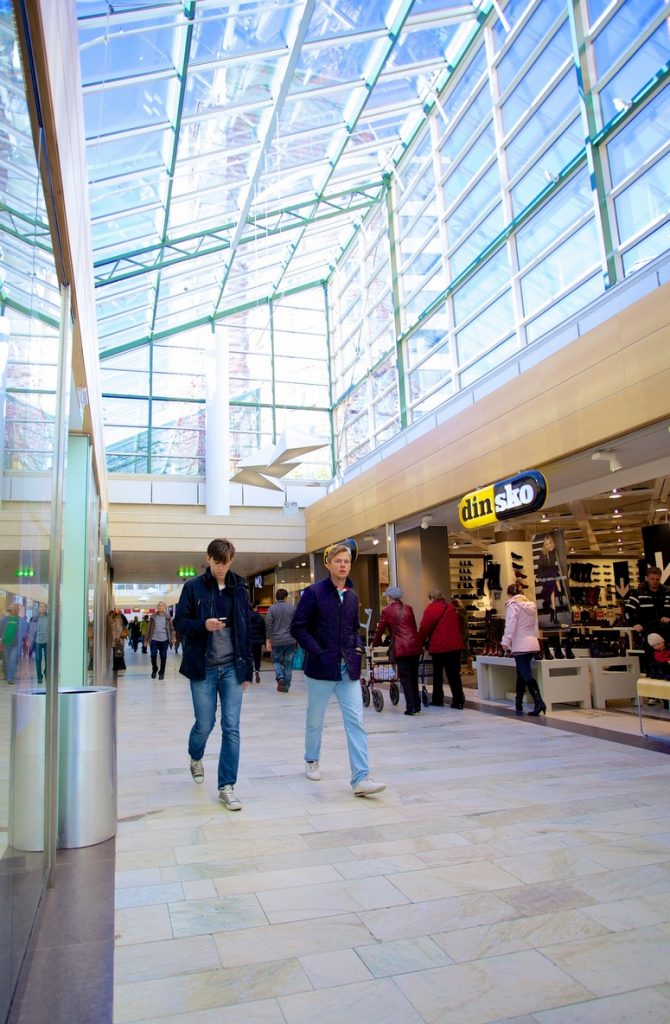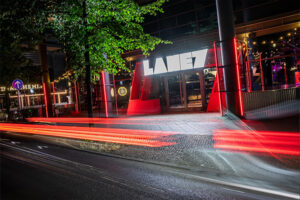Some trends are only recognized at a time when following them has long become a necessity – and not just an added bonus. One example is the process of gathering and analyzing information about customers, to utilize it correctly and build a relationship.
International and regional retailers have been doing this for quite some time. They took it to such a high level that the more faint-hearted customers already start to groan when they are asked for their loyalty cards at the checkout counter or when too many newsletters pile up in their inboxes.
It is well established that these kinds of services pay off for retailers. Persistence pays off. Due to the data they have gathered, stored, and analyzed for years, they know who is responsible for their turnover and how they can increase it theoretically.
The tried and true face-to-face interview
Operators of shopping centers still lag behind in this area – for now. Even operators of designer outlet centers, first and foremost McArthurGlen, generate customer data more vigorously than they do. For example, the people in charge of the London Designer Outlet (LDO) conduct their own postcode research using face-to-face interviews to track key metrics like levels of awareness and engagement within selected towns in the catchment area.
With this research, the British capital’s designer outlet center – managed by Realm – should be able to channel its marketing investment as well as identify and reach those who might otherwise miss out. Furthermore, they conduct so-called exit interviews. These interviews help to understand guests’ preferences while their experiences are fresh in their minds (see “Opinion” by Sue Shepherd, Center Manager of LDO).
The global economic digitization is another aspect that plays into the hands of operators of malls, designer outlet centers, and of course of retailers. New metrics now prevail with tools that allow you to know more about visitors and their behavior, how they interact with brands and other competing malls. Here, if not before, is where smartphones come into play.
In Spain, approximately 80% of the population owns one of these little all-rounders. This percentage is above the EU-average of 60%. Madrid’s La Vaguada shopping center benefits from this high level of technical affinity of the Spanish, as Deputy Director Jesús Hernández Esteban reports (see the corresponding article).
Customer retention in times of social media

Taking this information into account, as well as the fact that those who use smartphones never go anywhere without it, it was decided at La Vaguada will take advantage of this situation in various ways—starting with a WIFI system. A software update was installed at this mall to provide basic data about customers’ behavior inside the scheme.
It already collects data like frequency of visits, new visitors versus returning visitors, hot and cold zones, and dwell time. This information is much appreciated by clients in the mall’s common areas. They can better evaluate the effectiveness of their efforts with information about their stand’s visibility in La Vaguada. All of this is made possible with an investment of less than €6,000/year.
This mall in the Spanish capital is just one example for how digital megatrends along the costumer’s journey, Big Data, mobile solutions, or social media revolutionize traditional customer retention management – beyond conventional customer retention tools like gift cards. Comprehensive digitization can be used to trace customers seamlessly.
Contact points at malls can generate valuable information. One can obtain feedback on the respective marketing measures as well as learn to better understand customer behavior in general. With these results it is possible to adapt one’s offer quickly, comprehensively and in a way that is perfectly tailored to the respective customers’ needs.
Popular start-ups
It is not surprising that more and more innovative start-ups consult and support shopping centers in this regard. One example is Movvo, a company that is headquartered in London. The proptech company sees a trend towards increased collaboration and data sharing between shopping centers and retailers.
“The general goal is to increase shopper engagement and maximize productivity. Shoppers are more sophisticated than ever, but the industry has the tools to keep up,” says CEO Cyrus Gilbert-Rolfe. Movvo has come to market with a new generation of data collection and diagnosis technology, enabling transformational change in the retail industry.
By allowing shopping center owners and operators to identify key elements in the relationship between their centers and their visitors, they put the tools to maximize business efficiency and profits in the hands of the people who can really use them: leasing directors, VPs of marketing, center managers, and CEOs.
Movvo’s Internet-of-things-platform ingests behavioral intelligence from location data, demographics, social media, loyalty schemes, etc. It processes that costumer data using a patented machine learning, pattern matching system, and answers questions such as: What tenant should I put here? What should I use this space for? Which tenants need to go? How do I attract the hottest brands? What is the solution for that cold spot? Is the vertical circulation improvement strategy working? What is the value of the digital signage?
Trust and consent are prerequisites
Let’s get back to the customer level – and a practical example of how Big Data analyses work today: A customer, who wears a heart rate monitor and transmits his or her data to a mobile app, visits a shopping center with back-end-analysis services. The customer already consented to the collection of his data beforehand. He logs into the mall’s free WiFi network and the data analyst can access his data.
The customers strolls by the shop window of a sports retailer and takes a look at the latest generation of running shoes. His heart rate increases. The data analyst forwards this information to the sports retailer, who sends a 30% discount for a limited time to this customer’s smartphone.
The extent to which customer data can be monetized, however, is determined by an important factor: trust. The condition under which the above-mentioned example can play out this way is that the person who gets the discount for the shoes discloses his personal data in advance. This means that retailers have to establish a certain level of loyalty with customers and gain their trust.
The Icelandic software company Locatify shows us how customer retention tools of the future and for the next generation could look like. It recently helped the Danish mall Lyngby Storcentre to launch a beacon treasure hunt with their “GeoTrail GO” app. Seasonal holiday-themed games are used to encourage children to explore the shopping center. Using the app’s indoor map, they can find virtual treasures and win prizes from the toy store based on how many points they get. It’s a great way to keep kids occupied while their parents shop.






